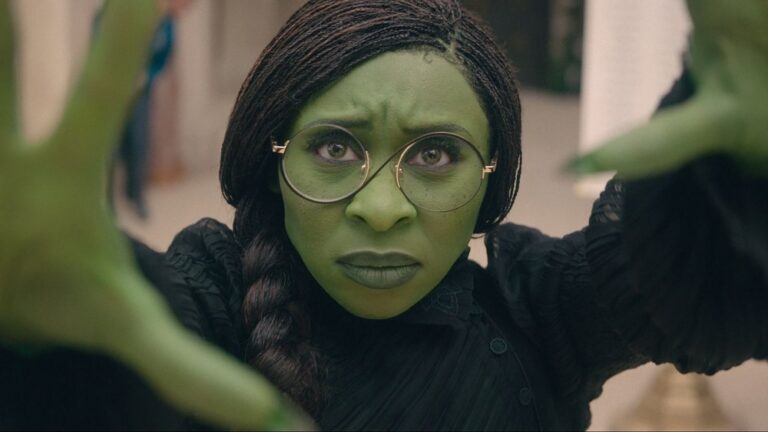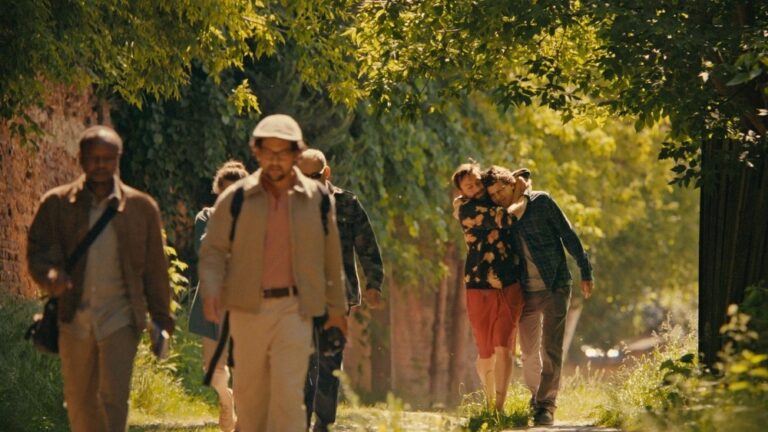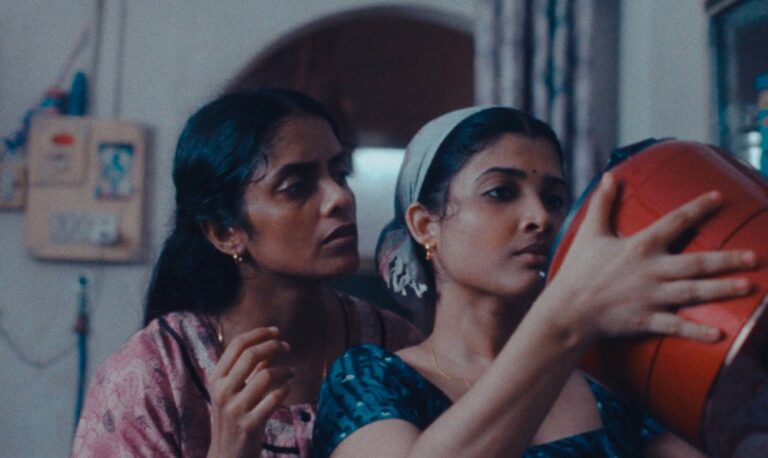Every couple of weeks, the OFCS polls its members with a question related to movies. It can be serious or amusing, but each member is given the opportunity to submit a short response to the question, which we will then post on Thursday mornings. Here is this week’s query.
Essay Question #20:
What is the greatest unsung film of the past 50 years? Which buried treasure is waiting to be discovered?
Question Submitted by: Jerry Roberts @ Armchair Cinema
Responses
Rick Aragon @ Rick’s Cafe Texan
Having seen it again recently, I think The Rocketeer was not as appreciated as it should have been when it was released. A fast, zippy throwback to the serials of the 1930s and 40s, it did what it set out to do: be a fun, light, action/adventure with a bit of comedy thrown in (even if there were a few dark moments).
Everyone played the parts correctly, the sets appropriately lavish or comic-book like, and unapologetically light. Why it failed so badly I don’t know, because it accomplished its goals so well to where, rewatching it, I found myself thoroughly entertained.
I think The Rocketeer is a film that should be reevaluated and hopefully rediscovered.
Robert Cashill @ Popdose
Home video brings to light numerous films that are worthy of a second look. One is Miracle Mile (89), now a supplement-heavy Blu-ray release and a film that is best watched cold, without knowing much about it. A “little” movie studded with big surprises.
Andy Crump @ Paste Magazine
VALERIE AND HER WEEK OF WONDERS. For the Guillermo del Toro aficionado crowd, this thing is an absolute embarrassment of riches. Criterion’s June Blu-ray release put the film back into circulation, but as an entry in a specific cultural film movement, it’s worth revisiting (to say nothing that the film is just plain wonderful).
Jim Dixon @ Examiner.com
‘House of Dark Shadows’ greatest unsung movie of past 50 years
Vampires are mainstream pop culture staples now. This was not always the case. “House of Dark Shadows,” released in 1970 by M-G-M while the daytime gothic soap opera it’s based on was still on the air, looked at objectively, is actually one of the best traditional school vampire movies ever made. The movie, made on a shoestring budget and shot in about thirty days, was the feature film directorial debut of series creator Dan Curtis, a man who like Roger Corman, knew how to get things done. Sam Hall and Gordon Russell’s screenplay condensed storylines from the series. Willie Loomis (John Karlen), handyman at Collinwood, an estate outside of a small Maine fishing town, believes he has found the instructions to find the long-lost Collins family jewels, breaks into a family mausoleum and pries open a coffin bound in chains. Instead of finding treasure, Loomis has unleashed Barnabas Collins (the late Jonathan Frid), the vampire scion of the Collins family. Barnabas soon appears at Collinwood where he introduces himself as a cousin from England. The ruse works, and Barnabas is given possession of “The Old House,” the run-down, original Collins house located on the Collins estate grounds. He also meets Maggie Evans (played with disarming sincerity by Kathryn Leigh Scott), who strongly resembles his long-lost fiancée, Josette Dupres, and becomes convinced she is in fact Josette’s reincarnation. Barnabas’ true nature is discovered by Dr. Julia Hoffman (Grayson Hall), who is nonetheless falls in love with him and believes she can cure him. Barnabas, who wants nothing more than a mortal life with Maggie, agrees to let her try. But romantic triangles often end badly, particularly when of the participants is undead.
Curtis was not blind to the erotic subtext of the vampire legend, but he didn’t over-romanticize it, either. Unbound by network censors, “House of Dark Shadows” featured some of the most graphic blood-drinking done in a feature up to that time, with realistic neck wounds provided by up and coming makeup artist Dick Smith. The movie was shot on location at the Lyndhurst Estate in Tarrytown, New York and the Sleepy Hollow Cemetery, with cinematography by Arthur Ornitz, who would later shoot higher profile movies such as “Serpico,” “Death Wish,” “Next Stop, Greenwich Village” and “An Unmarried Woman.” His moody, dreamlike day-for-night sequences in “House of Dark Shadows” elevated the look of the movie, which is far more handsome than most low-budget horror movies of the period. The performances, provided by members of the TV cast, are uniformly excellent. These people were good, pure and simple. “House of Dark Shadows” also anticipated another staple of the modern vampire story by pioneering the theme of vampire angst with a vampire protagonist who both preys on the living and yet is repulsed by his own actions. Though in most other regards “House of Dark Shadows” hewed closely to established Hammer Films style conventions, i.e., the vampires are nocturnal creatures who sleep in coffins by day and have to be dispatched by a stake through the heart, this was fairly revolutionary. And please note: the vampires in “House of Dark Shadows” do NOT sparkle.
Marilyn Ferdinand @ Ferdy on Films
My choice came immediately to mind: Patrick Wang’s 2011 debut indie film IN THE FAMILY. The opening line of my review of this remarkable film was “IN THE FAMILY should be seen as soon as possible by as many people as possible.” This utterly original, emotionally true and moving film about a gay couple (one of whom is a Chinese-American contractor from Tennessee) and a child custody battle received raves from the 71 critics who supplied links for IMDb. When compared with the 366 IMDb reviews for the 2104 cookie-cutter crash and crunch spectacle TRANSFORMERS: AGE OF EXTINCTION, for example, it’s apparent not enough people were singing its praises, most likely because it just wasn’t available. It is now on DVD, so there is no excuse to skip one of the few life-altering movies to have emerged from the flat cinematic landscape of the past few decades, especially in the United States. Critic Sheila O’Malley said in her review that IN THE FAMILY makes you want to be a better person. She’s right. Find and watch this movie, and help change the world for the better.
Candice Frederick @ Reel Talk Online
Mother and Child.
Mike McGranaghan @ The Aisle Seat
There is only one acceptable answer to this question, and that answer is “Pootie Tang.” Why? Because it’s a wah-dah-tah to the shamma cow. Sippy tay!
Jerry Roberts @ Armchair Cinema
There are about 9 or 10 films that I always have ready with a rooster call whenever anyone asks me what movies they should watch. Right at the top of that list is “Sita Sings the Blues,” the most entertaining musical that I’ve seen since “Singin’ in the Rain.” I’ve had the chance to show this movie to several people and nearly all of them (except for a few immobile film snobs) absolutely loved it. Directed by Nina Paley, it is an animated retelling of the Indian folktale The Ramayana seen through musical numbers the utilize jazz from the 1920. It’s fun, it’s funny, it’s heartbreaking, it’s everything that a musical should be. I think that if the public would only find this film, it could be a great big hit.
Thomas Spurlin @ ThomasSpurlin.com
Roman Polanski’s Macbeth (1971) doesn’t get nearly enough recognition for being one of the stronger direct adaptations of William Shakespeare’s play, a work that was instrumental in getting me interested in literature at a younger age. Haunting imagery driven by the grim production design surrounds a sharp depiction of the witchcraft at work behind the Scottish king’s political ascent, elevated by the director’s eye for unsettling psychodrama. Polanski really understands the symbolic triggers and thematic longevity of the text, but he also displays a firm grasp on pacing and keeping the audience locked in on the theatrics, combining both sides into an accessible, invigorating classic take on the medieval tragedy.



